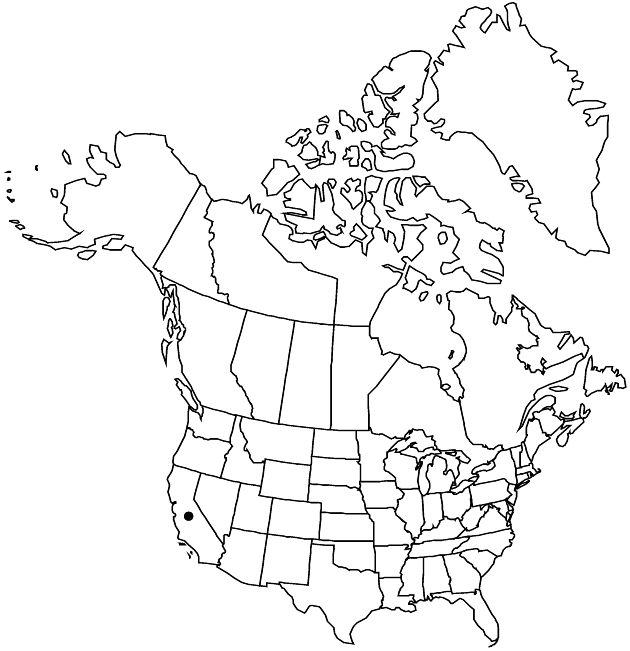Difference between revisions of "Lasthenia microglossa"
Man. Bot. San Francisco, 205. 1894.
FNA>Volume Importer |
FNA>Volume Importer |
||
| Line 30: | Line 30: | ||
|elevation=0–1000 m | |elevation=0–1000 m | ||
|distribution=Calif. | |distribution=Calif. | ||
| − | |discussion=<p>Because the rays are inconspicuous, plants of the self-pollinating Lasthenia microglossa are easy to overlook. Besides growing in habitats similar to those occupied by L. debilis, L. microglossa is found also beneath chaparral shrubs and extends into desert areas, where it grows near rocks that may provide favorable shade and moisture conditions.</p> | + | |discussion=<p>Because the rays are inconspicuous, plants of the self-pollinating <i>Lasthenia microglossa</i> are easy to overlook. Besides growing in habitats similar to those occupied by <i>L. debilis</i>, <i>L. microglossa</i> is found also beneath chaparral shrubs and extends into desert areas, where it grows near rocks that may provide favorable shade and moisture conditions.</p> |
|tables= | |tables= | ||
|references= | |references= | ||
| Line 54: | Line 54: | ||
|publication year=1894 | |publication year=1894 | ||
|special status= | |special status= | ||
| − | |source xml=https://jpend@bitbucket.org/aafc-mbb/fna-data-curation.git/src/ | + | |source xml=https://jpend@bitbucket.org/aafc-mbb/fna-data-curation.git/src/8f726806613d60c220dc4493de13607dd3150896/coarse_grained_fna_xml/V19-20-21/V21_851.xml |
|tribe=Asteraceae tribe Heliantheae | |tribe=Asteraceae tribe Heliantheae | ||
|subtribe=Asteraceae (tribe Heliantheae) subtribe Baeriinae | |subtribe=Asteraceae (tribe Heliantheae) subtribe Baeriinae | ||
Revision as of 16:37, 18 September 2019
Annuals, to 25 cm. Stems erect or sprawling, branched distally, villous, especially distally. Leaves linear or subulate, 15–80 × 1.5–2(–4) mm, margins ± entire, faces moderately hairy. Involucres cylindric to narrowly obconic, 6–8.5 mm. Phyllaries 4, elliptic to oblong, hairy. Receptacles subulate, papillate, glabrous. Ray florets 4; (corollas yellow) laminae lance-elliptic, (0–)0.5–1 mm. Disc corolla lobes 4(–5). Anther appendages subulate (without wartlike glands; style apices lanceolate, glabrous). Cypselae black, ± linear, to 5 mm, hairy; pappi 0, or of 1–4 brown or white, linear to ovate or lanceolate, aristate scales (sometimes variable within heads). 2n = 24.
Phenology: Flowering Mar–May.
Habitat: Shaded areas, woodlands, chaparral, deserts
Elevation: 0–1000 m
Discussion
Because the rays are inconspicuous, plants of the self-pollinating Lasthenia microglossa are easy to overlook. Besides growing in habitats similar to those occupied by L. debilis, L. microglossa is found also beneath chaparral shrubs and extends into desert areas, where it grows near rocks that may provide favorable shade and moisture conditions.
Selected References
None.
